Supporting materials
Download
Download this article as a PDF

How can you measure a beam of particles without interfering with it? The answer: by using a curtain of supersonic gas.
In the first Star Wars film, ‘A New Hope,’ Obi-Wan Kenobi explains to Luke Skywalker that the Force is an energy field connected to all life that can be manipulated by Jedi. When the Death Star destroys the planet Alderaan, Obi-Wan feels a disturbance in the Force.
Back on Earth, researchers at the University of Liverpool Department of Physics are using a ‘disturbance in the force’ to gain vital information needed to harness the power of the world’s biggest particle accelerator – the Large Hadron Collider. For the first time, it is possible to capture an image of the particle beam as it moves through a curtain of supersonic gas.
The Large Hadron Collider (LHC) is used to study the conditions that existed within a billionth of a second after the Big Bang by colliding beams of high-energy protons or ions at speeds close to the speed of light.
The beams of particles created by accelerators like the LHC are used in a range of applications. They are used in scientific experiments, such as antimatter studies with antiprotons and nuclear physics studies using rare isotope beams, in industrial applications from mass spectroscopy to semiconductor fabrication, and in medical imaging and cancer treatment applications, such as hadron cancer therapy (a new form of irradiation therapy that uses protons and other ions instead of X-rays).
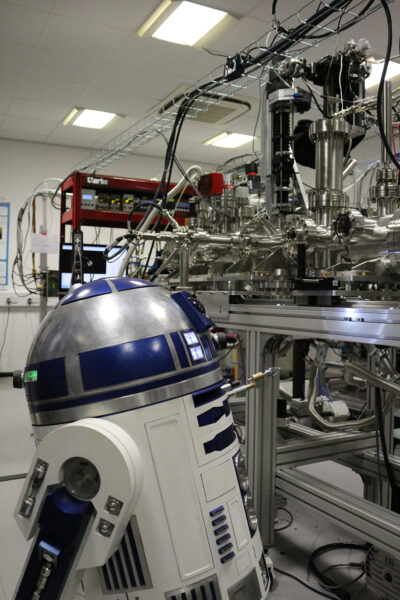
These applications require precise control of the size and intensity of the beam. However, measurement of the beam to ensure it meets the specification required by these applications is problematic because either the beam is highly energetic and destructive or the particles are very rare and difficult to detect. Additionally, in medical applications there may be little time for optimization between patients.
This has created a demand for new techniques to monitor the beam profile and quality in real time without interfering with the beam. The University of Liverpool’s Quantum Systems and Accelerator Research (QUASAR) Group is developing a novel technique that uses a supersonic gas jet to measure the beam transverse size or beam width. Where better to apply these new approaches than at the LHC? This accelerator is currently being upgraded to increase its luminosity (a measure of the number of particle collisions per second) by a factor of ten to increase the number of rare particles it is able to generate.
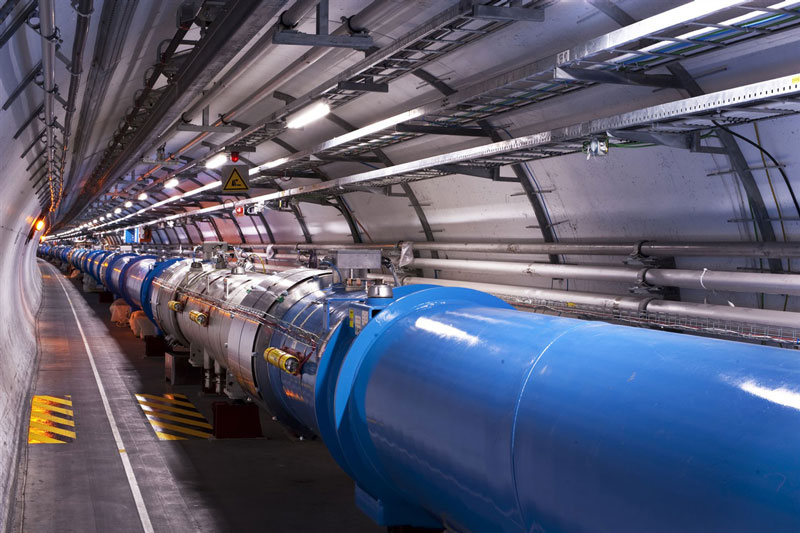
The high-luminosity LHC (HL-LHC) project is being led by CERN with the support of an international collaboration of 29 institutions in 13 countries, including the United States, Japan, and Canada. One of these upgrade projects focuses on the integration of improved techniques for monitoring and controlling the beams.
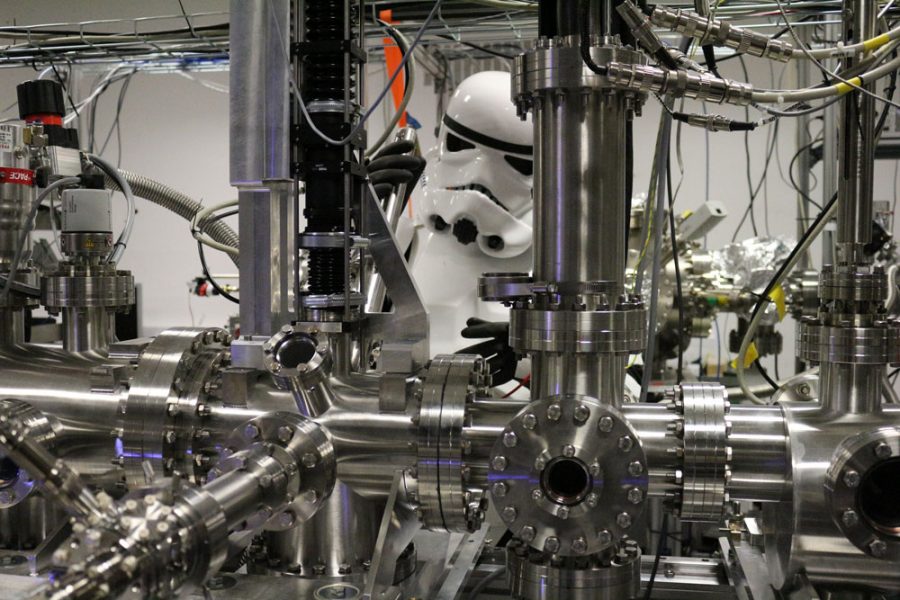
A particle beam is a stream of charged particles, such as electrons and protons, often accelerated to near the speed of light. These beam particles have a charge, which means they can be accelerated, deflected, or focused by using electromagnetic (EM) fields.
The particles are extracted from a particle source and inserted into the accelerator chain through a low-energy section (low particle speed), before being propelled to higher and higher energies in subsequent steps (high particle speed). The particles are typically not homogeneously distributed within the beam, but are packed into pulses (bunches of particles), so they can be accelerated by using a modulating electric field called a radiofrequency (RF) field.
The beam is transported under vacuum down a tunnel called a “beam pipe” and accelerated at intervals by RF fields, with the particles kept focussed by magnetic fields.
It is important to know the details of several beam characteristics at all times:
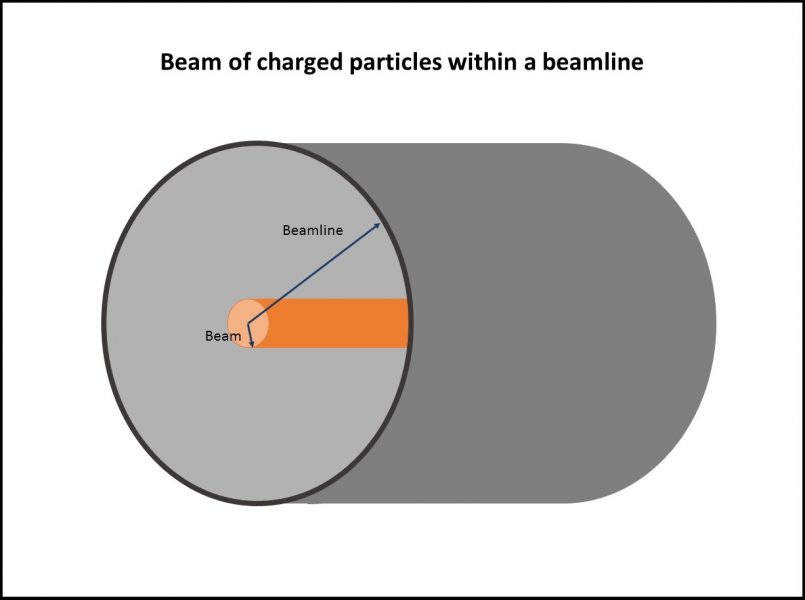
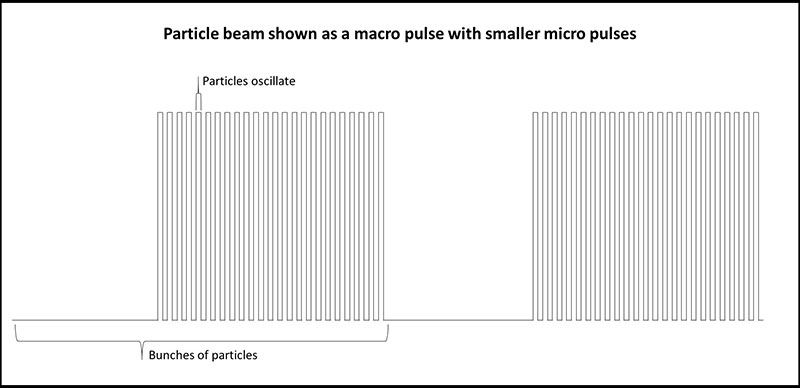
As the beam particles travel inside the beam pipe, their trajectory is controlled by using bending and focusing magnetic fields. These fields need to be increased in proportion to the particles’ momentum as they are accelerated. To adjust the magnetic field strength dynamically, it is vital to know the beam’s properties at all times and to monitor these parameters without affecting the motion of the beam itself.
Traditional methods for monitoring beam characteristics use physical structures, such as intercepting foils which measure interactions, and scintillators that, when struck by an incoming particle, give off light from the energy they have absorbed.
However, such methods are not suitable for measurements in the LHC because the beam is so powerful that it would go right through these monitors!
Researchers in the QUASAR Group have been developing a gas screen as an alternative monitoring method.[1,2]
Supersonic expansion is used to create the gas curtain (animation: gas-jet shaping) as shown in diagram 3. The gas moves through a small orifice from a region of high pressure into a region of very low pressure and expands at a velocity faster than the speed of sound.
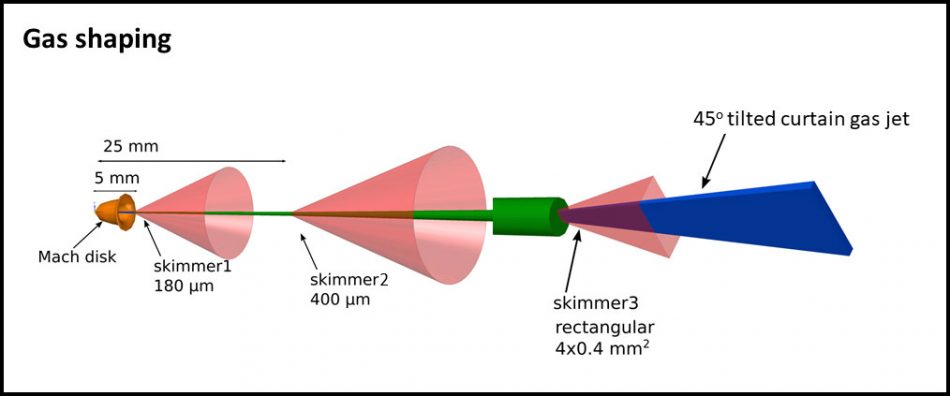
After the gas passes through two cone-shaped skimmers, a well-defined pencil jet is created. This then passes through a rectangular skimmer that shapes the jet into a thin curtain that is tilted by 45 degrees.
This gas curtain then interacts with the primary particle beam to be analyzed. The primary beam excites electrons in the gas molecules from the ground state to a higher energy level. Once the beam has passed, the electrons return to the ground state and photons of a precise wavelength are emitted. This fluorescence is detected and used to produce a two-dimensional image of the beam (see diagram 4).
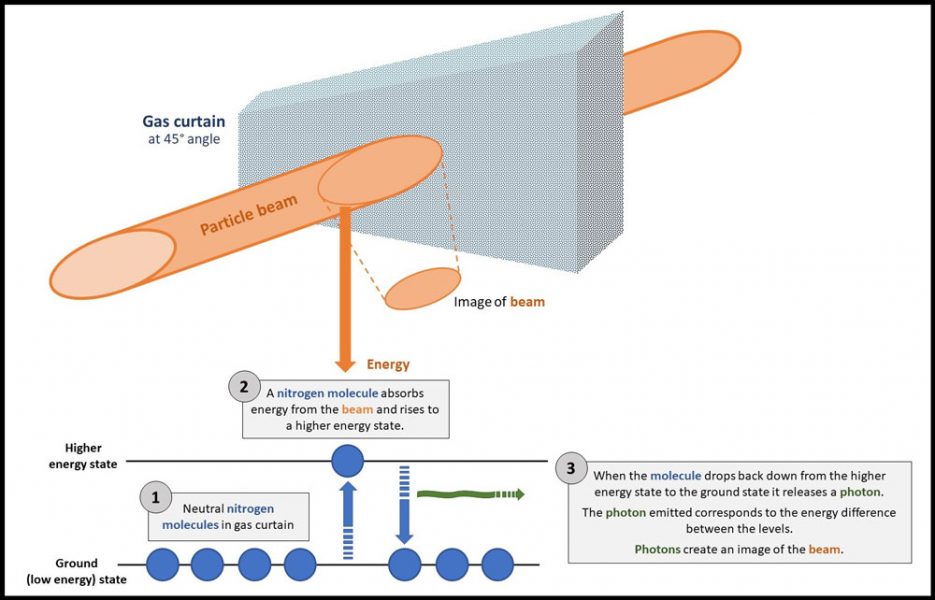
The intensity of the generated signal can be controlled by changing the properties of the jet, such as the gas species, inlet pressure, or the dimensions of the different skimmers. Thus, the monitor can be optimized for different applications with a range of particle beams and energies. The accompanying detailed illustration provides an overview of the whole system.
The captured image gives detailed information about the beam position, transverse and longitudinal profiles, and intensity without interfering with the particle beam.
Using a supersonic gas jet as a beam profiler offers a range of interesting possibilities, such as live feedback on the accelerator system. This allows the machine parameters to be dynamically adjusted based on readings from a monitor that doesn’t affect the beam, which gives access to operational flexibility. There are a number of benefits to be gained from a gas-jet-based beam profile monitor – a new technology that could be used in essentially any accelerator or light source.
As Yoda also said to Count Dooku: “This is just the beginning!”
[1] Tzoganis V, Welsch CP (2014) A non-invasive beam profile monitor for charged particle beams. Applied Physics Letters 104: 204104. doi: 10.1063/1.4879285
[2] Salehilashkajani A et al. (2022) A gas curtain beam profile monitor using beam induced fluorescence for high intensity charged particle beams. Appl. Phys. Lett. 120: 174101. doi: 10.1063/5.0085491. [Added after publication]
Download this article as a PDF